Family : Acanthuridae

Text © Giuseppe Mazza

English translation by Mario Beltramini
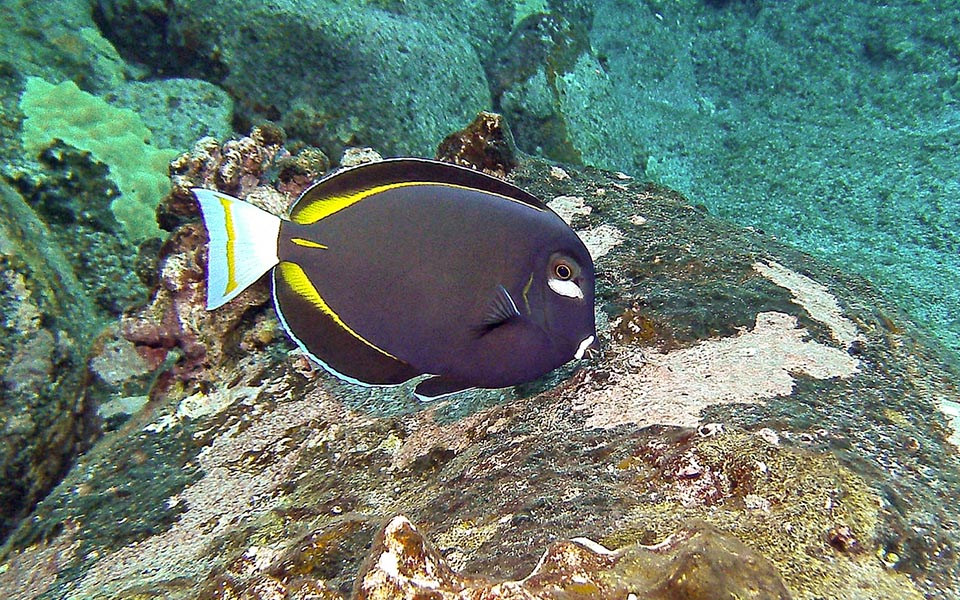
Acanthurus nigricans has a very vast diffusion in the tropical waters of the Eastern Indian Ocean and on the two coasts of the Pacific © Barry Fackler
The Whitecheek surgeonfish, called also Black surgeonfish or Golden rimmed surgeonfish (Acanthurus nigricans Linnaeus, 1758), belongs to the class of Actinopterygii, the ray-finned fishes, to the order of Perciformes and to the family of Acanthuridae.
The name of the genus “acanthurus”, comes from the Greek “akantha” = spine, and “ura” = tail, due to the spine, sharp as a razor, these animals have on both sides of the caudal peduncle.
The name of the species “nigricans” comes from the Latin “nigrico” = tend to black, and therefore “tending to black” with clear reference to the dark livery.
Zoogeography
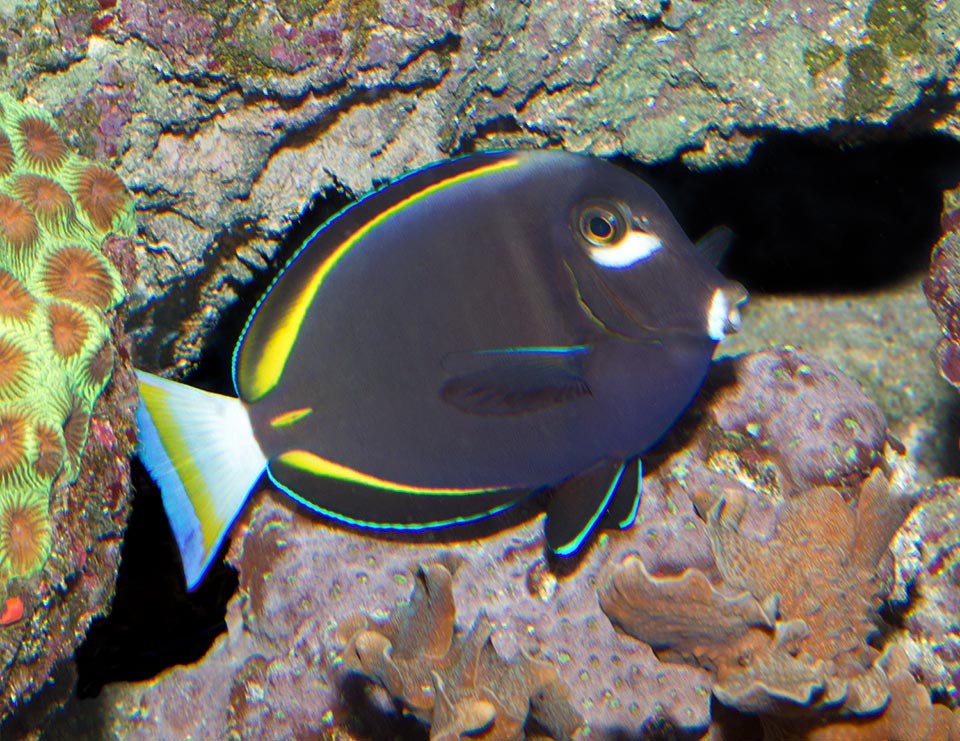
It’s the only Acanthurus with white cheeks, and is also called Goldenrim surgeonfish because of its showy yellow bands at the base of the dorsal and the anal fins © Giuseppe Mazza
It has a very vast diffusion in the tropical waters of the Eastern Indian Ocean and on both sides of the Pacific.
Just to give an idea of its distribution, we find it at the Maldives, the Cocos Islands, Christmas Island, in India, Thailand, Australia, Indonesia, New Guinea, Micronesia, Philippines, Taiwan, China and southern Japan.
In the southern hemisphere, it reaches Tonga and New Caledonia. Eastwards, it is at home in Samoa, Marquesas Islands, the Hawaii and the Galapagos, up to Mexico and various Central American nations.
Ecology-Habitat
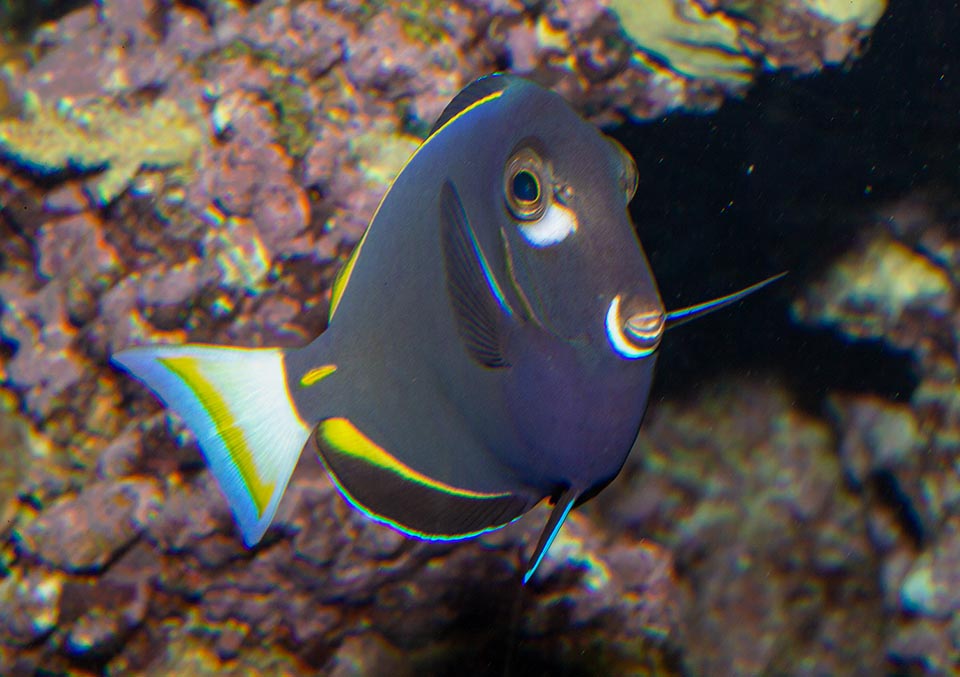
The oval, compressed on the sides body, shows on the caudal peduncle the yellow case from which comes out the poisoned, sharp, retractile blade, used for defence © Giuseppe Mazza
It mainly lives in shallow waters, in the sunny lagoons rich of filamentous sea weeds, but can go down on the outer side of the reefs up to more than 60 m of depth.
Morpho-physiology
It can reach the 21 cm of length, but rarely exceeding the 15 cm. The body is flat, more or less oval, with only one great dorsal fin with 9 spiny ray and 28-31 soft ones. The anal is symmetrical but shorter, with 3 spines and 26-28 unarmed rays. The pectoral and the ventral ones, rounded at the apex, have modest size and the caudal, truncated in the juveniles, is then slightly crescent-shaped. The small mouth exhibits flat teeth and interlocking for cutting the sea weeds.
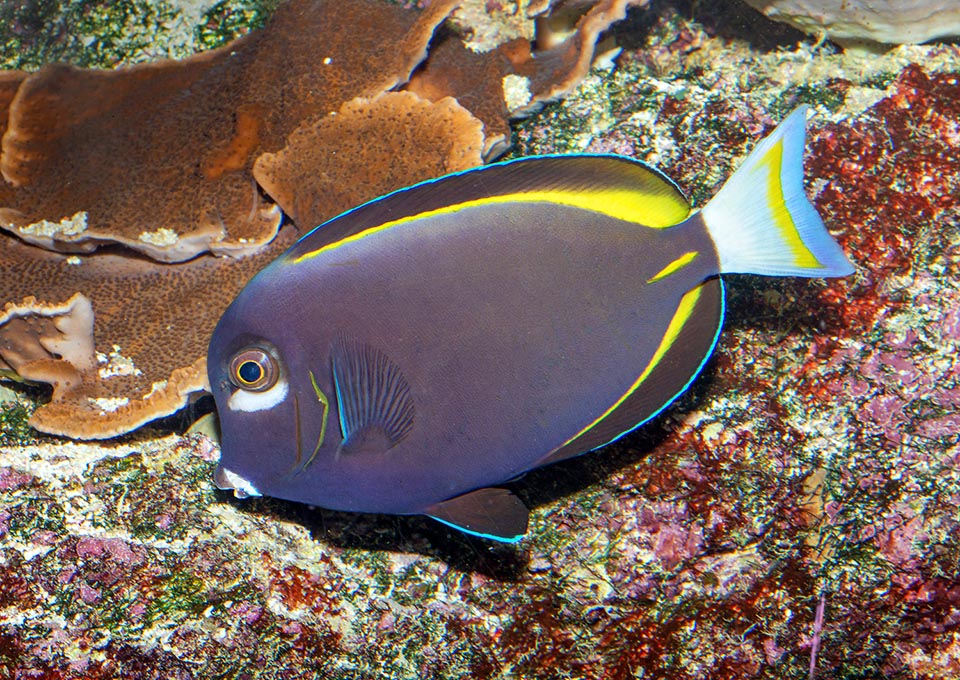
It swims the whole day eating mainly filamentous algae and the film of microscopic algae and debris covering the bottoms, but grazes also the more consistent ones © Giuseppe Mazza
On the bluish-brown body, very dark, stands out a white spot close to the lips and a bigger one under the eye, which justifies the epithet of surgeonfish with the white cheeks. As a matter of fact, there are many more or less black Acanthurus but none has this particularity.
At the base of the dorsal and of the anal, we note also two elegant golden bands, as highlights the vulgar name of golden rimmed surgeonfish. They become wider towards the caudal peduncle for indicating the housing of the same colour, from where comes out, when the fish for defence folds the tail, a sharp and poisonous spine that discourages the aggressors.
Also the caudal fin, white, shows a golden vertical band just before the extremity; whilst the other fins often have an elegant blue fine border.
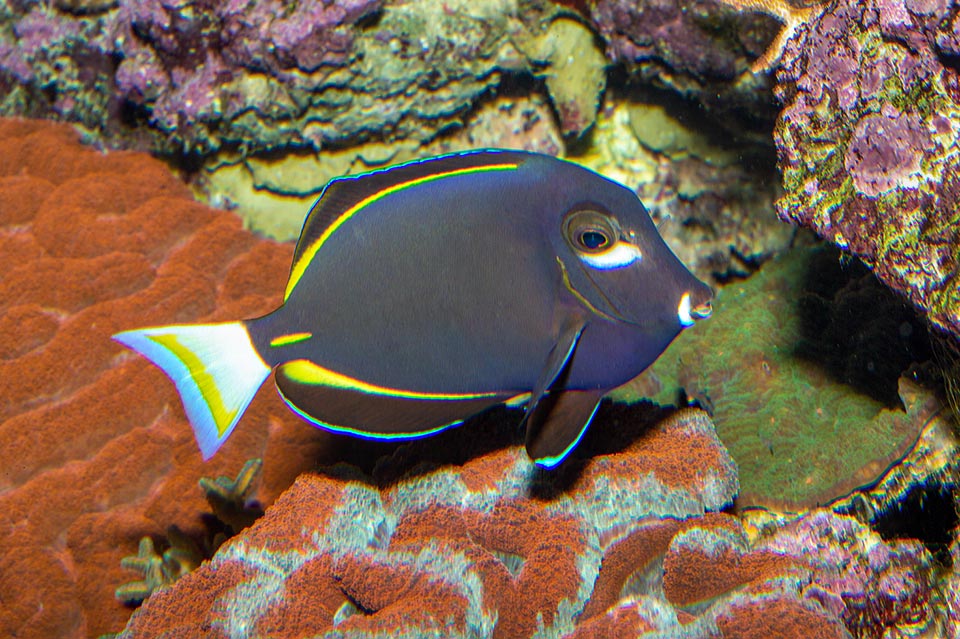
Lives mostly in shallow waters but can go down on the reefs outer side up to beyond 60 m of depth © Giuseppe Mazza
Ethology-Reproductive Biology
The whitecheek surgeonfish swims all the day round, in small schools, nourishing of filamentous sea weeds and of the pellicle of microscopic algae and debris covering the sea-beds, but grazes also consistent benthic algae such as those belonging to the genera Caulerpa, Cladophora, Codium, Dictyota, Gracilaria, Laurencia, Padina, Polysiphonia and Turbinaria.
The eggs hatch rapidly, in less than two days from the fecundation which takes place mid-water. The larvae, dispersed by the currents, live still for 2-3 days at the expense of the yolk sac and then begin their diet based on microscopic organisms. While growing they show long spines, maybe poisonous, on a flat and diaphanous body, well adapted to the dangers of high seas life.
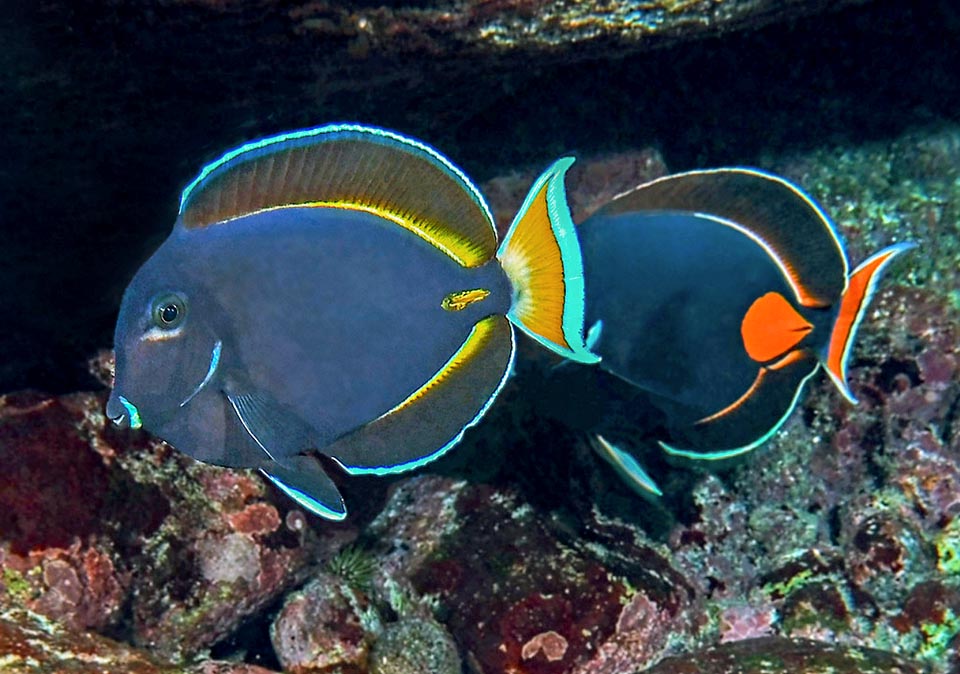
Where the distribution areas do overlap, it can hybridize with some Acanthurus. Here, left, the dramatic image of a hybrid with Acanthurus achilles, back on the right. It has maintained, reduced, the white spot under the eye and on snout, but dorsal and anal fins are much taller, and the shape and tail pattern are those of the other species © Barry Fackler
When they go back to the reef, once the metamorphosis is completed, they already resemble to the adults, and for growing sheltered from the dangers they live among the branches of the great madrepores. In Micronesia, the Acanthurus nigricans has hybridized with the Acanthurus achilles, as has already occurred with the Acanthurus leucosternon and the Acanthurus japonicus.
Even if the vulnerability index of the species is presently modest, marking 34 on a range of 100, it is necessary to control the populations as having a long reproductive cycle and 4,5-14 years for doubling the number.
Synonyms
Chaetodon nigricans Linnaeus, 1758; Acanthurus glaucopareius Cuvier, 1829; Acanthurus aliala Lesson, 1831.
→ For general information about FISH please click here.
→ For general information about BONY FISH please click here
→ For general information about CARTILAGINOUS FISH please click here.
→ To appreciate the BIODIVERSITY of BONY FISH please click here.
→ To appreciate the BIODIVERSITY of CARTILAGINOUS FISH please click here.
